Even at the end of the chim. French breeders were withdrawn polyanth roses. Then they produced a real boom in gardening: compact, hardy and unpretentious perennial plants adorned urban squares and squares, private gardens and yards. By the middle of the twentieth century. A lot of varieties of these unusual flowering bushes were obtained, which differed in the color and pomp flowers, height of the bushes, the size of the leaves.
Today, not all daches know about the existence of polyanth roses: there are more various tea-hybrid species and floribund. However, landscape designers are increasingly resorting to the use of "vintage" species of polyanth roses to create interesting clubs, parking and even premises.
Content
Polician rose: general characteristics
Polyanth roses - multi-flowered: pink bushes are abundantly covered with small flowers at the very beginning of summer and continue their bloom until the middle of the autumn, and sometimes before the first frosts.
- flowers diameter from 2 to 10 cm;
- the smell is light and unobtrusive, some varieties do not smell at all;
- flowers are collected in inflorescences from 4 to 10 pcs.;
- depending on the variety, flowers can be non-none, medium alcoholic or strong (the number of petals from 10 to 60 pcs.);
- the color most often pink or red, white - meets less often;
- yellow polyanth roses do not exist;
- small dark green or light green glossy leaves;
- very thick bushes;
- height of bushes from 30 to 100 cm (depending on the variety);
- flowering is not interrupted throughout the season;
- resistant to various diseases;
- normally transfer excess dampness;
- surrive in the soil of any type;
- frost-resistant;
- easily breed, it is possible to grow a bush even from seeds;
- growing well in the open sun.
Polician Rose: Growing
Polician rose is so unpretentious that even the gardener-novice will be able to grow without problems, it is only necessary to learn some major laws. Perhaps not many varieties can boast such endurance and unpretentiousness in care and the ability to multiply in various ways.
- Reproduction seeds.
- Vegetative reproduction:
- drawing;
- division bush;
- tank;
- graft.
Polician Rose: Cultivation of Seeds
Very few rose bushes can be grown from seeds: only non-mentioned species that give the so-called "full-fledged seeds" (seeds from which the plant is obtained with the same characteristics as maternal). In addition to the politant rose, the seeds can multiply only a miniature rose, canine and needle.
Seeds you can buy in the store or collect yourself, if you or your neighbors in the country already have an adult plant. Seed seeds need in August. For this:
- choose a slightly misunderstood fruits (not completely red, and with a blush);
- candle the skin of the fetus (carefully not to damage the seeds);
- remove seeds and clean them from the pulp.
So that young bushes fasten and were ready for landing in the soil in the spring, the seeds should be sowing in February. Some gardeners, before germinating seeds, proceed with their special growth stimulants - it accelerates the appearance of the first sprout.
So, before sowing the seeds of polyanthide roses, it is necessary to subjected to stratification - germination.
- take a gauze folded several times or a piece of fabric;
- richly moisten its hydrogen peroxide;
- on the cloth spread the seeds;
- cover the same impregnated piece of fabric;
- received "Envelopes" with seeds. Complete in a plastic bag (in order to prevent the evaporation of peroxide);
- on packages, mark the date of the beginning of the germination of seeds;
- put packages in the bottom vegetable box of the refrigerator (the temperature is about +5 degrees);
- do not forget to periodically check the condition of the seed: they should not be mold;
- if the mold appeared - the seeds should be replaced with new;
- if the process goes normally, you will notice the sprouts after 2 months or a little earlier.
When you notice the sprouted seeds (even a few) immediately plan them into the soil, and let the rest lie in the refrigerator:
- use small pots for sowing seeds;
- constantly monitor the soil moisture;
- to avoid diseases, climb the soil perlit (there will be a layer of 1 cm);
- expect germs for the week;
- provide 10 hours of uninterrupted lighting: for this you will need special lamps;
- after a couple of months, the first buds are formed and flowers will bloom;
- regularly water the seedlings and feed them with fertilizers.
Polyanthovaya Rose: reproduction of stalling
Polyanth roses are perfectly multiplied with stalling. However, breeders believe that the resulting plants will be worse to carry freezing. Therefore, it will be necessary to pay special attention to their loaning:
- trenkov's workpiece should be carried out at the end of June;
- cut half-pool shoots;
- cut them so as to get a cutlery with a length of 5-9 cm;
- on each cutken should be 1-2 kidneys;
- the cut is made obliquely under the kidney itself;
- the bottom sheet is removed, it will reduce the evaporation of moisture;
- prepare the soil: To do this, pour the ground into the box, and on top of it a mixture of peat and sand;
- before disembarking, you can soak cuttings in Kornvin or Heteroa Auxene - this will accelerate the process of the coen;
- pour the soil and land the cuttings in it, placing them under the tilt of 45 degrees;
- cover the drawer with cuttings glass to save high humidity (from 80%);
- place the box in a warm and well-ventilated room;
- do not allow direct sunlight;
- when the cuttings are cursed, move the box for the whole winter to the cold room (about 2 degrees);
- spring roses can be planted in an open ground.
Polician Rose: Bust Decision
The reproduction of roses dividing the bush solves several important tasks in leaving the plant:
- formation of new bushes;
- improvement and rejuvenation of the bush who has grown strongly (after all, it often happens that large bushes die due to severe growing);
- small bushes look careful;
- easier experience in winter;
- they are easier to care for them.
So, if you decide to make the division of the bush of polyanthide roses, remember that the division is undesirable to expose the plants vaccinated on the root. Most often, this type of reproduction is used for bushes grown from a cuticle:
- bust division carved in autumn or early spring;
- the best time to care for roses - the evening;
- cut 2/3 of the length of the shoots in order to give the plant the opportunity after the transplant is faster to restore the root system;
- well, pour bushes;
- if the bush has lateral self-shoots, you can dig exactly this escape (not alarming the root system of the parent plant);
- the next day dig bushes;
- disinfect the scissors with alcohol and cut the bush into several parts;
- deliver so that in each part there is enough roots, as well as several kidneys or young shoots;
- separated bushes Sit into the ground along the root neck;
- falling asleep the earth in the hole, periodically water her;
- the planted bush is once again good, and then pour dry ground under it - it is necessary for uniform evaporation of moisture;
- after a year, you will have large bushes of polyanth roses.
Polician rose: reproduction
- conduct the procedure in early spring so that over the summer the young plant managed to gain strength;
- choose a strong young escape growing at the root neck;
- make small grooves (depth to 10 cm);
- mass stem to the ground and put into the groove;
- candle a bark near the kidney (it will cause intensive recovery of plants and the formation of roots);
- pinnate metal wire;
- fall off the damp ground so that the upper part of the grazing stem (2-3 kidneys) remains above the ground;
- purify the upper part of the vertical position, attaching to the peg;
- regularly water the soil;
- if the fall is well rooted by autumn, it will be possible to jerk from the parent plant, if not - leave another year.
Polician rose: landing in the ground
Polyanth roses can be planted in the soil in the fall, if you live in the southern regions. The best option for the middle strip of Russia is to plant flowers in spring (from April 20 to May 20 inclusive). Over the summer, they will have time to root well and prepare for wintering:
- getting Started by landing seedlings when the soil warms up to 9-10 degrees;
- pull the area provided for the landing of roses;
- put organic fertilizer to the soil (at the rate of 1 kg for each trough of polynth roses);
- make the pits of this size so that the roots can fit in them in the straightened state;
- add 1 tbsp to each hole. Mineral fertilizer for flowers and mix it with soil;
- before landing, carefully free the roots of roses from the old soil;
- cut shoots, leaving 2-4 kidneys;
- weak branches cut the maximum;
- seedlings place 45-50 cm at a distance of each other;
- after landing, the seedlings are well, so that the soil can settle down;
- be sure to hurt bushes to protect shoots;
- after 10-15 days, you will notice the appearance of new stems;
- if the stems do not appear, you need to mulch the soil with sawdust or leaves, to better save moisture in it;
- after the emergence of new shoots, remove the extra earth.
Polyanthus rose: pruning
- be sure to trim the damaged or very long roots before planting shrub roses spring polyanthus necessary. When the bush is planted in the ground and cut all the shoots by one third.
- Removal of the weak, infecting with a disease or a broken shoots will provide an opportunity to actively develop new and more powerful.
- In the autumn, in late October, when the rose bud, a little trim all flowering branches (leave 7-8 of the kidneys). Also during the flowering time do not forget to remove the faded flowers - it will give a rose to continue actively bloom.
- The following spring, need a little shorten all shoots (about a third of the length). Also, be sure to remove all withered and weak branches. The same procedure should be done every year in spring.
Polyanthus rose: the shelter for the winter
Polyanthus roses, although they are very hardy species, but in the winter need shelter. There are many different ways to protect roses from the winter cold. Every gardener chooses for themselves based on how the material has, in some climates grow his plants.
If the rose froze in the winter, then in the summer she does not have enough strength to increase the necessary leaf mass, which means that the next winter will become destructive. In the fall, when there are light frosts at night, the rose is preparing for wintering, activating its own reserves. At such a period, it is not necessary to cover the bushes - hardening for them much more useful. Remember that the rose normally moves freezing to -5 degrees.
Under October - while you need to start training bushes to wintering.
- to cover roses is needed in dry weather;
- dry must be all materials;
- cut bushes;
- prepare a skeleton frame (a simple wooden box is also suitable);
- install the frame and completely (from above and from all sides) to wrap it with several layers of spunkonda;
- on top, put the polyethylene film and fix it so that it does not carry out the wind;
- in March, when the day will be warm, you can open and ventirate the bushes;
- fully removing the insulation layer only by the end of April, when the weather is warm;
- after opening the roses, cut the bushes and put the grass on top or dry foliage - it is necessary that the rose is gradually adapted to the transition to the summer mode;
- it is possible to remove the shelter only after the emergence of new young sprouts.
Polician rose: varieties
In the middle of the twentieth century. Breeders began work on the crossing of polyanth roses with tea-hybrid. As a result, varieties were derived, which obtained the size, shape and colors of tea roses and the stability of the poliant. These varieties of hybrid-polyanth roses were called "Floribund". Most of the polyanth grades moved into the background. Consider the "antiques", but not lost their popularity to this day of the variety of polyanth roses.
Border King (Border King)
The bushes of this variety of polyanthide roses reaches a height of 60 cm, their leaves are small, dark and shiny. This variety loves the sun and grows well in the winds protected from the wind. Flowers at the base are white, but to the edge of the petal painting becomes bright red. Refer to the category of weakness: have 10-15 petals. At the inflorescence is collected up to 45 buds with a diameter of about 5 cm. The variety is actively used to decorate lawns and borders. Become a bright accent when creating landscape design.
Betty Prior (Betty Prior)
Flowers of saturated pink color with a brighter base. Inflorescences of 15 nonachhrovaya roses, a diameter of about 6 cm. The smell does not have a rose variety. The bushes are smooth in high (about 80 cm), are well taken out in the cold climate. A variety feature is quite high resistance to black spottedness and mildew. To rose well develop, it needs regular feeding and proper trimming. If you plan the bushes at a distance of 30-40 cm from each other, they form a solid live elevation. The variety can be grown not only in the open soil, but also on the veranda or in the room.
Cameo (Cameo)
This is one of the most popular varieties of polyanthide roses. Flowers small (up to 4 cm in diameter) terry flowers of salmon-pink color. It has a strong and very pleasant fragrance. The height of the bush reaches 60 cm. Needs regular irrigation and feeding. Landscape designers often combine this variety with lavender, sage and white lilies on one flowerbed to obtain harmonious and gentle compositions.
Dagmar Spet (Dagmar Spath)
Terry (up to 25 petals) Snow-white flowers have a rather large size for polyanth roses - 7 cm in diameter. Going in inflorescences of 40 pcs. Bushes reach 70 cm in height. The weakness of the variety is susceptibility to the damage to mildew. At the flower beds, they are often combined with blue varieties of Astra, Lavanda, Barwinkom - the result is a blue-white, similar to a cloudy sky, a tender composition.
Gloria Mundi (Gloria Mundi)
Flowers are very small (up to 2 cm in diameter), terry (more than 25 petals), have a saturated burgundy-orange color. Going into small inflorescences of 10-15 pieces. The variety feature is that the flowers are very resistant - they do not fade for a long time and retain a saturated color, and also not afraid of harsh change of weather, wind and shower. Blossom continues to the first frosts. Bushes are quite low: reach a maximum of 45 cm in height. Rose need to trim the early spring, leaving 2-4 kidneys on each shoot. Used to decorate household plots and to create bouquets (for a very long time they do not lose freshness after cutting).
Orange Triumph (Orange Triumph)
Flowers have red-salmon color and reach 4 cm in diameter. This variety belongs to the Gustomakhov: Each flower has about 60 petals. Bushes can reach 1 meter in height and very much branched. To the bush developed well, it is important to correct it in the first and second year after planning.
Little White Pet (Little White Pet)
Polyanth rose White has a snow-white color. Flowers terry medium sizes (up to 5 cm in diameter) form small inflorescences (up to 5 pieces). Have a very gentle soft flavor. Bushes can reach 80 cm in height. Requires the trimming of weak shoots and wind protection. Very good look in combination with other perennial plants, blooming white flowers.
Manou Menou Meilland
The terry flowers have a lilac color at the beginning of their flowering, but gradually acquire a dark pink color. Reach in diameter 10 cm. Buds are dense, very beautiful shape resembling Chinese rose. This is a very hardy variety with excellent immunity to various diseases. The bushes are distinguished by strong branchiness and are well trimmed to give the crown of a spherical shape. If planted plants at the rate of 7 pcs per square meter - you will get a solid carpet from flowers on your flower bed, which will delight your sweet aroma to the first frost. Landscape designers do not advise to combine this variety with plants, blooming red flowers.
Polician Rose: Diseases and Pest
Before planting a new bush, pay attention, does not have diseases in the plant. If the problem is discovered, then immediately remove the damaged part of the bush. Remote stems should be burned so that through them the diseases do not apply to other bushes. If the removal did not help stop the disease - you need to apply a spraying by people or chemicals.
Once a week, look at the plants to notice the signs of possible problems as early as possible, and periodically (every 2 weeks) process the bushes with special solutions for the prevention.
- Infusion of horsetail for the treatment and prevention of fungal diseases of roses. Take 150 g of dried and 1 kg of fresh grass, fill the water liter and boil half an hour on weak heat. So you make concentrate. Divide it with water in the ratio of 1:10 and spray the bushes.
- Tools from Tly. It will take 30 g of dry wormwood or 500 g of fresh. Fill with a large amount of boiling water (10 liters) and give it to be broken. Then, spreading with infusion 1: 3, thoroughly spray sheets of roses both from above and below.
Basic pests of polyanth roses
- Aphid. This pest lives on the leaves and stems of the rose and feeds on it with juice. If you have noticed the appearance of the Tly, immediately cut the most populated parts of the plant, and then spray the bush with an infusion of wormwood or a chemical agent from juice pests.
- Rosal cycards. Small insects settle at the bottom of the rose sheet. On the surface of the sheet you will notice the appearance of small white spots. To get rid of the pest, spray the bush with a solution of the household soap.
- Cute tick. The insect shams on the bottom of the sheet. On the leaves are visible yellow spots that are gradually gray. If the condition of the bush is running - on the reverse side you can discern a cob. First of all, remove the leaves on which there is a web. Then spray the whole plant with a decoction of the horsettle, the infusion of garlic or yarrow.
- Rose leaflet. The pest settles on the leaves of roses to postpone the eggs. Therefore, the leaves are twisted. It happens at the very beginning of summer. If you notice the damage to the bush, immediately remove the leaf leaf and spray the bush insecticide.
- Rosal rot. Insect puts eggs on a rose stem. When the larvae appears, they penetrate into the stem deep, destroying it. The first signs are the appearance of small holes in the stems. To save the bush, all the affected stalks need to be removed. For prevention throughout the spring, process the plants with the insistency of the wormwood.
The main diseases of poliant roses
- Black spotty. The sign of the appearance of the disease is black spots on the outside of the sheet. Leaves quickly dry and fall. The development of this fungal disease can be promoted by increased humidity. For the prevention of the disease, if rains often come, spray the plants with a decoction of a chewing or nettle.
- Puffy dew. Often manifests itself after the protracted rains. On the leaves there appears a white flare. To cure bushes, spray them with burgundy liquid every 10 days.
- Rusted rust. It is characterized by the appearance of yellow and brown spots on the leaves. You can fight the fungal disease using a burglar liquid. Starting from April, spray the bushes 2 times in 3 days, and then every 2 weeks for prophylaxis.

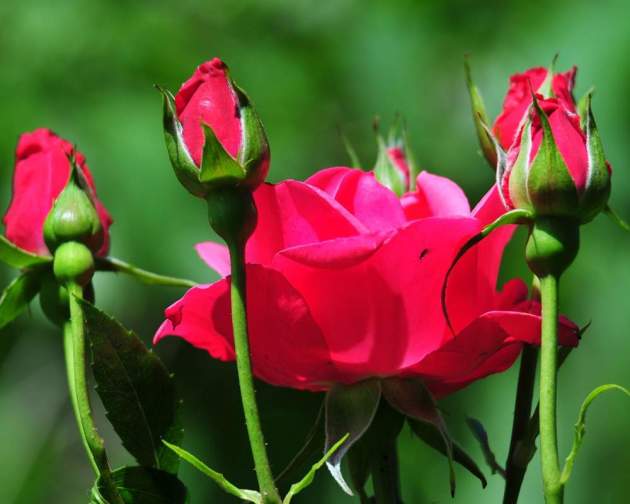
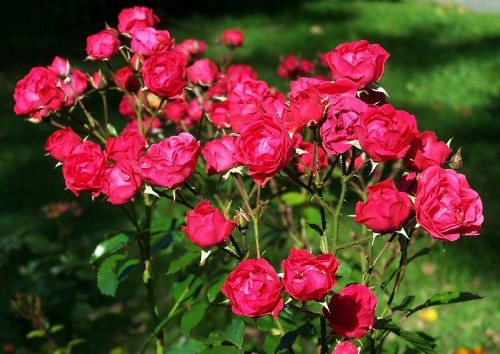
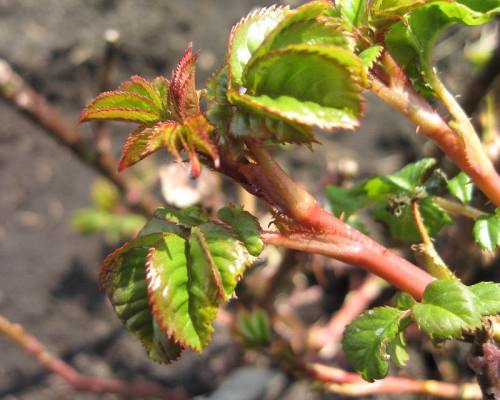
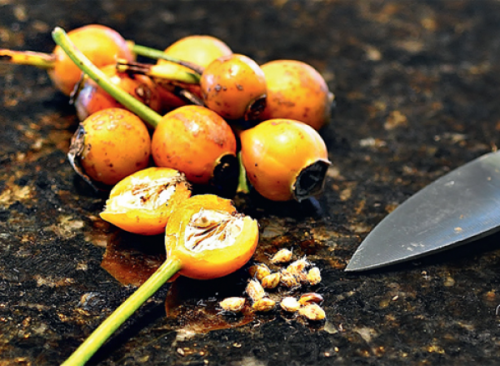
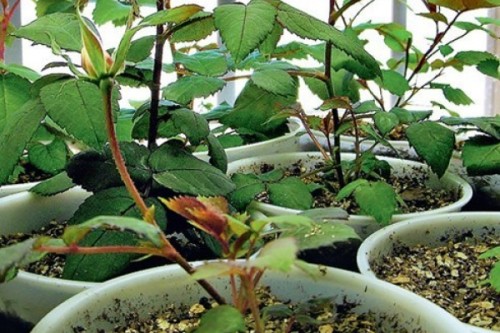

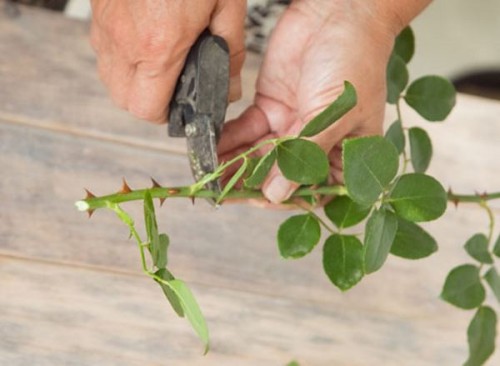
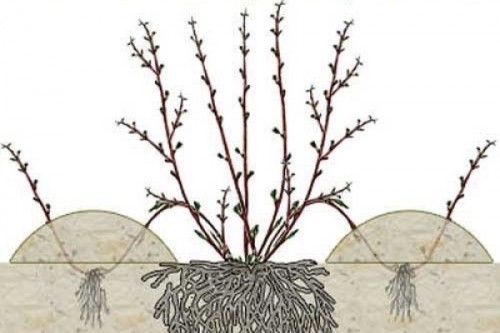
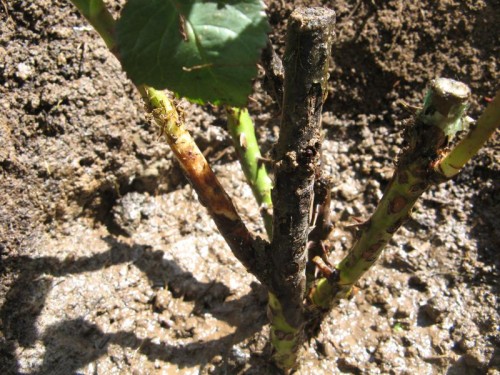
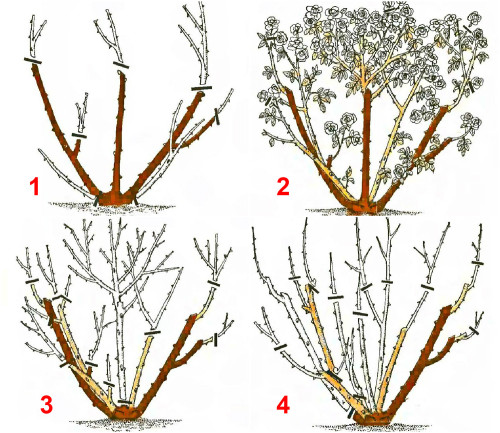
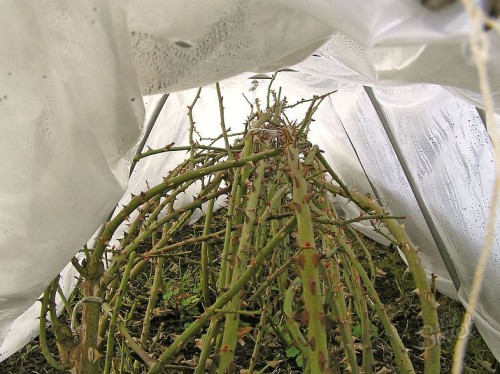

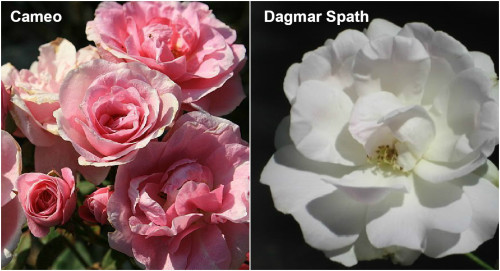
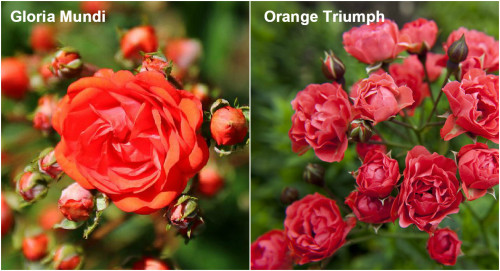

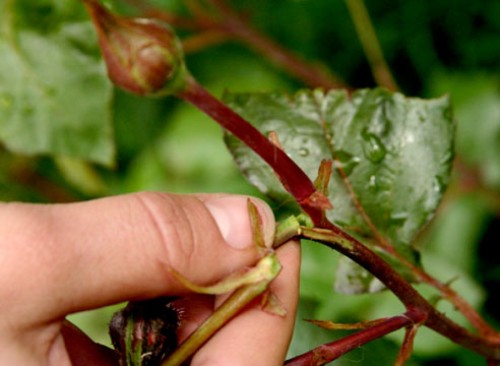
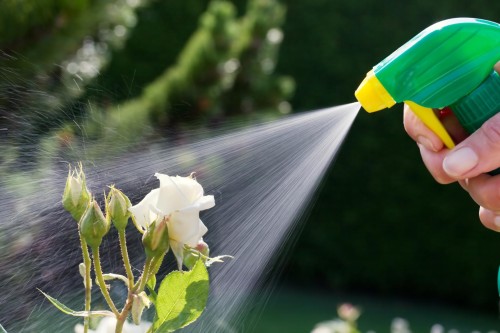

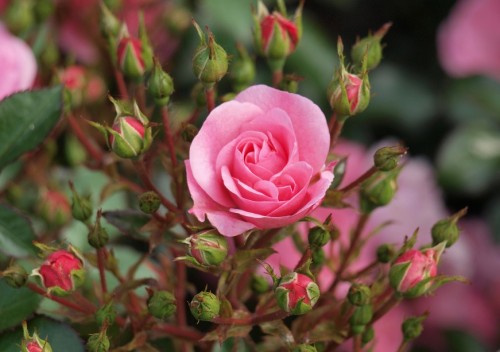

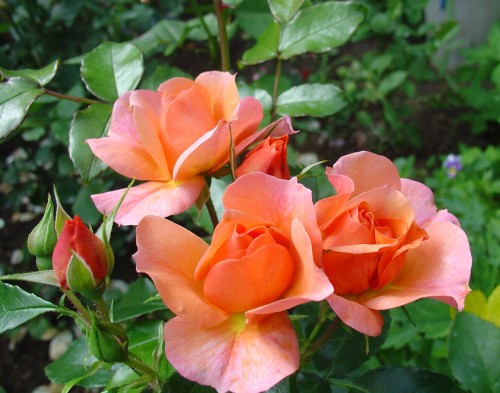

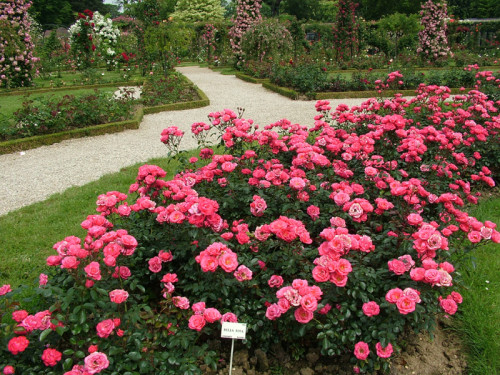

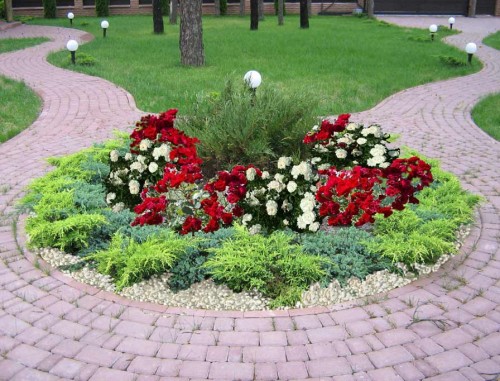

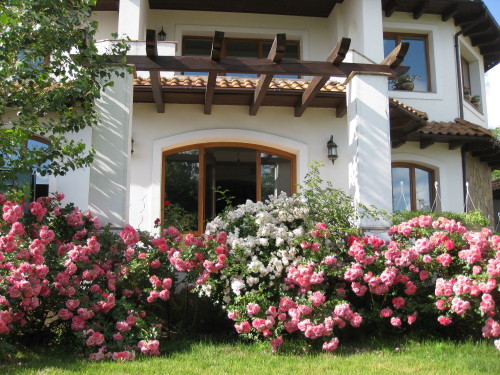
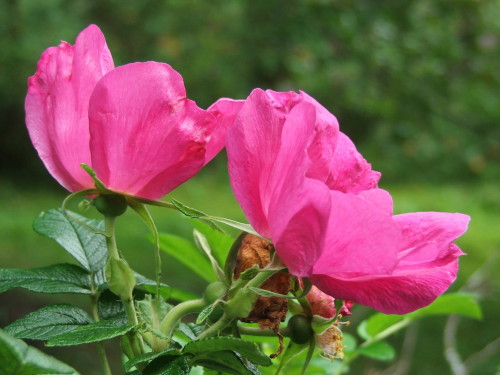













 Start a discussion ...
Start a discussion ...